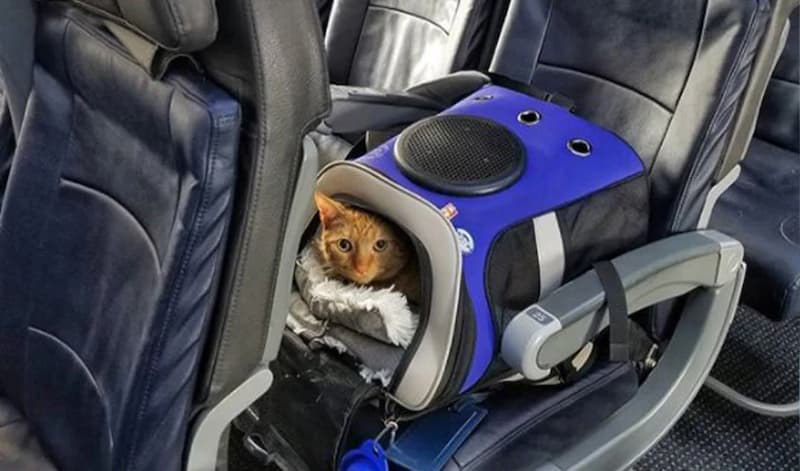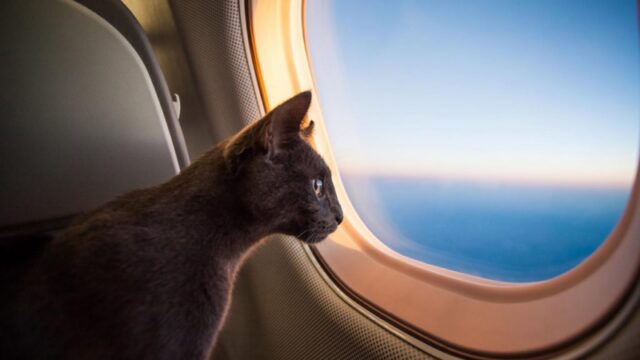Whether you’re planning to move to a new home or bring home a cat from a breeder in another state, shipping your cat may be the only reasonable option. Cats are important members of the family, so choose a safe and reliable mode of transportation. Of all cat transport modes, air transport is the preferred and safest option, especially if you need a longer time to plan your trip. Let’s dive deeper into the subject and understand the entire process of cat shipping and how much it costs to ship a cat by air.
The Importance of Shipping Cats Safely
The most important part of shipping a cat is to be safe and sound throughout the process. From getting off to boarding, making the journey as easy, fast, and comfortable as possible is the ultimate goal.
Hiring a stranger or company to arrange transportation can be very stressful for pet owners. After all, no one will love and care for your pet as you do. You must make sure they have enough food and water, put on a nappy pad in the event of an accident, and have all the proper documentation for travel. Planning ahead is crucial if you want everything to run smoothly and give your cat a healthy birth.
How to Ship a Cat Safely
Here is a brief overview of the basic steps to safely air transport a cat:
- Plan ahead and learn about country import regulations, rabies vaccine requirements, and anything else that might play a role.
- Choose an airline-approved travel crate for your cat and start crate training today. If your cat isn’t used to being in the crate for a while, just associate it with a trip to the vet, do them a favor and help them get used to it in the weeks leading up to your move – it’ll make it easier for everyone much more.
- Book a flight for your cat on a pet-friendly airline. Some carriers are more pet friendly than others, so take the time to do some research and make an informed choice.
- When you need help, ask your veterinarian, fellow pet travelers, and professional pet shippers for help.
Process of Shipping A Cat By Air

Make sure you pre-plan the whole thing before you go into action, knowing all the details and rules of country imports, necessary cat vaccination requirements, and other relevant factors that may come into play.
Step 1: Select an airline-authorized shipping crate for your cat. Then start crate training to get your cat relaxed and accustomed to the transport.
Note: If you find that your cat is still not getting used to the crate and is only in contact with you during a trip to the vet, then in the remaining days before your trip, help your pet get used to it. This will make things easier for you and the cat and the pet transportation service agent you hire.
Step 2: Book a flight for your cat on a pet-friendly airline that has a proven track record of transporting pets in the past. Well, there are many carriers – one is better than the other. So, take your time, do your research, and decide what’s right for your pet.
Note: If you are confused by this, consult your cat’s veterinarian or another pet traveler. However, your best bet is to ask an experienced pet shipper, as they may better understand your requirements and help you come up with the best idea.
Step 3: Go to your cat’s veterinarian for a full check-up, complete the necessary vaccinations, and obtain health certificates that may be required if you are a boarding pet.
Step 4: A day or two before your trip (depending on the agency’s policy), your cat will be picked up by a pet transport agent. This is done to familiarize the pet with the person they must travel to.
Step 5: After boarding, provide pets with food and other essentials every 4 to 6 hours. However, with infant pets, there will be fewer meal intervals.
Finally, you need to provide all the necessary documents, including rabies vaccinations, veterinary inspection certificates, and indications. Other additional documentation requirements include (feeding confirmation) – providing food and water prior to boarding, checking the live animal checklist, and checking that sedative consent forms are properly filed.
How Much Does It Cost to Ship a Cat by Air?
Every pet behaves differently, making it difficult to provide an accurate price estimate right away.
That said, you can prepare some standard items as part of the overall cost.
Here are a few components of a typical cat action:
- suitcase
- Air tickets
- Transportation to and from the airport
- Veterinary visit before moving
- International health documents and import licenses
- government endorsement
- customs fee
- quarantine fee
Keep in mind that the cost of each of the above will vary based on a variety of factors. For example:
- Origin and destination
Generally speaking, the closer you are to the larger airports on either side, the lower the cost of travel. The overall cost will be higher if you start and end in smaller towns, require a little more driving at each end, or if the trip requires multiple flights.
- Import permit
Go international? Your new home country may require formal government approval in the form of an import license, which means added costs.
- Government endorsement of health certificate
Official health documents are usually required from a veterinary office, which in many cases must be certified by a relevant government agency, such as the USDA.
- Airport check-in
It usually takes a few hours to complete the check-in process, which requires the professional assistance of your agent to ensure that all paperwork is running properly (and, of course, taking good care of your cat during this time).
- Customs clearance
It may not be over after landing – in many cases entry procedures must be negotiated by customs agents, at which point duties, duties, or taxes may be payable.
On average, the charge for 1 km may be $8 to $10, the cost (kilometers traveled (say 10) X $(8-10) = $80 to $100), excluding other required expenses.
Can You Send A Cat By Plane On Itself?
Yes, you can send your cat by air all by itself. However, the situation will be a bit grim. So, it’s best to use it as a last resort when everyone else is bad. According to senior experts, it’s best to fly a cat with a human traveler so the pet can get food and stay hydrated during the trip.
Conclusion
Most likely you won’t accompany your cat from the airport. So, to be on the safe side, be sure to notify any close relatives or friends of yours to be there at the set time to pick up your cat. You can also pay them to cherish their time. It’s still 800 times cheaper than booking a final pickup from another pet agency.
When you receive your cat, call your veterinarian in case you have any questions about the sequelae of your cat’s transport trip. Alternatively, you can simply reconfirm your concerns from a pet placement service specialist you hire to follow tips or advice (if needed). This is the cat transport process. Hope that helps!

